
Baron Mowbray is a title in the Peerage of England. It was created by writ for Roger de Mowbray in 1283. The title was united with the Barony of Segrave in 1368, when John Mowbray, 1st Earl of Nottingham and 5th Baron Mowbray, succeeded to that title. His successor was named Duke of Norfolk. With the childless death of Anne Mowbray, 8th Countess of Norfolk, in c.1481, the Barony went into abeyance between the Howard and Berkeley families, and both styled themselves Baron Mowbray and Seagrave.

Baron Segrave (Seagrave) is a title in the Peerage of England. It was created by writ in 1283 for Nicholas de Segrave, and the title is drawn from a village in Leicestershire now spelled Seagrave.

Baron Hastings is a title that has been created three times. The first creation was in the Peerage of England in 1290, and is extant. The second creation was in the Peerage of England in 1299, and became extinct on the death of the first holder in c. 1314. The third creation was in the Peerage of England in 1461, and has been in abeyance since 1960.

Baron FitzWalter is an ancient title in the Peerage of England. It was created on 24 June 1295 for Robert FitzWalter. The title was created by writ, which means that it can descend through both male and female lines.

Baron de Clifford is a title in the Peerage of England. It was created in 1299 for Robert de Clifford (c.1274–1314), feudal baron of Clifford in Herefordshire, feudal baron of Skipton in Yorkshire and feudal baron of Appleby in Westmoreland. The title was created by writ, which means that it can descend through both male and female lines. The Norman family which later took the name de Clifford settled in England after the Norman Conquest of 1066 and was first seated in England at Clifford Castle in Herefordshire. The first Baron served as Earl Marshal of England but was killed at the Battle of Bannockburn in 1314. His 8th generation descendant the 11th Baron, was created Earl of Cumberland in 1525, whose grandson the 3rd Earl was a noted naval commander. On the latter's death in 1605, the earldom passed to his younger brother, the 4th Earl.
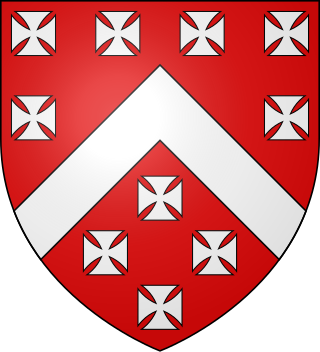
The title Baron Berkeley originated as a feudal title and was subsequently created twice in the Peerage of England by writ. It was first granted by writ to Thomas de Berkeley, 1st Baron Berkeley (1245–1321), 6th feudal Baron Berkeley, in 1295, but the title of that creation became extinct at the death of his great-great-grandson, the fifth Baron by writ, when no male heirs to the barony by writ remained, although the feudal barony continued. The next creation by writ was in 1421, for the last baron's nephew and heir James Berkeley. His son and successor William was created Viscount Berkeley in 1481, Earl of Nottingham in 1483, and Marquess of Berkeley in 1488. He had no surviving male issue, so the Marquessate and his other non-inherited titles became extinct on his death in 1491, whilst the barony passed de jure to his younger brother Maurice. However, William had disinherited Maurice because he considered him to have brought shame on the noble House of Berkeley by marrying beneath his status to Isabel, daughter of Philip Mead of Wraxhall, an Alderman and Mayor of Bristol. Instead, he bequeathed the castle, lands and lordships comprising the Barony of Berkeley to King Henry VII and his heirs male, failing which to descend to William's own rightful heirs. Thus on the death of King Edward VI in 1553, Henry VII's unmarried grandson, the Berkeley inheritance returned to the family. Therefore, Maurice and his descendants from 1492 to 1553 were de jure barons only, until the return of the title to the senior heir Henry, becoming de facto 7th Baron in 1553. Upon his death he was succeeded by his relative George Harding.
Baron Cromwell is a title that has been created several times in the Peerage of England. The first creation, which was by writ, was for John de Cromwell in 1308. On his death, the barony became extinct. The second creation came in 1375 when Ralph de Cromwell was summoned by writ to Parliament as Lord Cromwell. His grandson, the third baron, served as Lord High Treasurer to King Henry VI. However, on his death in 1455, the barony fell into abeyance between his nieces Maude and Joan. On Joan's death in 1490, the abeyance was terminated in favour of Maude, the fourth holder. When she died childless in 1497 the peerage once again fell into abeyance, this time between the daughters of the first baron. The title remained in abeyance for over 400 years. However, in 1922 the Committee for Privileges of the House of Lords reported in favour of the petition for the termination of the abeyancy of Selina Frances Bewicke-Copley. She was the daughter of Sir Charles Watson Copley, 3rd Baronet, and one of the co-heirs of Maud, daughter of the first baron Cromwell. Selina died in 1923 and in July of the same year, the abeyance was terminated in favour of her son Robert Godfrey Wolesley Bewicke-Copley, who became the fifth baron. He notably served as Lord Lieutenant of Leicestershire. As of 2010 the ancient barony is held by his grandson, the seventh baron, who succeeded his father in 1982. Having lost his seat in the House of Lords under the House of Lords Act 1999, in April 2014 he was elected at a hereditary peers' by-election as a Crossbencher.
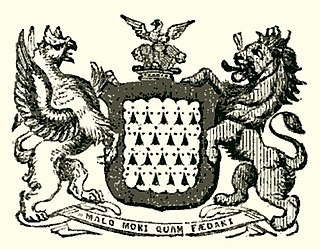
Baron Trimlestown, of Trimlestown in County Meath, is a title in the Peerage of Ireland.

Baron Sheffield is a title that has been created four times: once in the Peerage of England, twice in the Peerage of Ireland, and once in the Peerage of the United Kingdom.
Baron de Mauley, of Canford in the County of Dorset, is a title in the Peerage of the United Kingdom. It was created on 10 July 1838 for the Whig politician the Hon. William Ponsonby, who had earlier represented Poole, Knaresborough and Dorset in the House of Commons. He was the third son of the 3rd Earl of Bessborough, an Anglo-Irish peer, and the husband of Lady Barbara Ashley-Cooper, one of the co-heirs to the ancient barony by writ of Mauley, which superseded the feudal barony the caput of which was at Mulgrave Castle, Yorkshire, which barony by writ had become extinct in 1415. His son, later the second Baron, sat as Member of Parliament for Poole and Dungarvon.
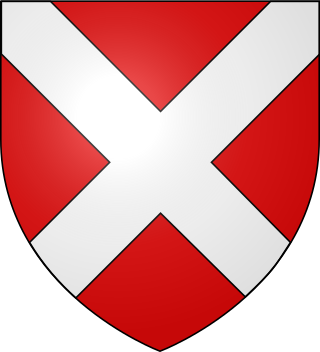
Baron Neville or Nevill was a title of nobility in England, relating to and held by the Neville family, a noble house in northern England. The Nevilles had their family seat at the manor of Raby in County Durham, and so were called barons "Neville of Raby". The title was first held as a barony by tenure, and was afterwards created twice by writ of summons to parliament.
William Francis Spencer Ponsonby, 1st Baron de Mauley, was an English Whig politician who sat in the House of Commons between 1826 and 1837. He was raised to the Peerage in 1838.
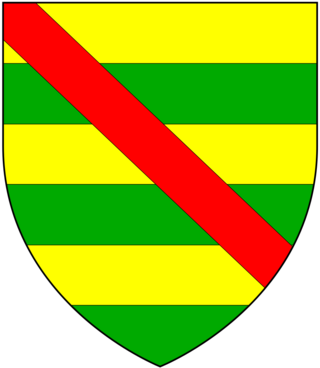
The title of Baron Poynings was created twice in the Peerage of England.
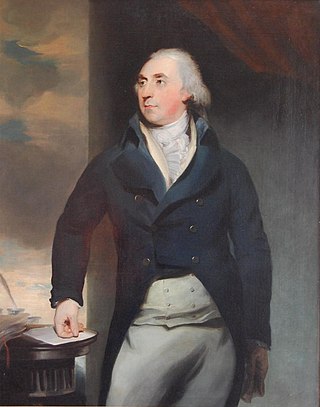
Baron Ponsonby, of Imokilly in County Cork, also referred to as Baron Ponsonby of Imokilly, in the County of Cork, was a title in the Peerage of the United Kingdom. It was created in 1806 for the William Ponsonby, who had previously represented Cork City, Bandonbridge and County Kilkenny in the Irish House of Commons and County Kilkenny in the British House of Commons. A member of the influential Ponsonby family, he was the eldest son of the Honourable John Ponsonby, second son of Brabazon Ponsonby, 1st Earl of Bessborough. His son, the second Baron, was a prominent diplomat and notably served as Ambassador to the Ottoman Empire and Austria. In 1839 he was created Viscount Ponsonby, of Imokilly in the County of Cork, in the Peerage of the United Kingdom. He was childless and the viscountcy became extinct on his death in 1855. He was succeeded in the barony by his nephew, the third Baron. He was the posthumous son of the Honourable Sir William Ponsonby, second son of the first Baron. Lord Ponsonby died childless and was succeeded by his first cousin, the fourth Baron. He was the son of the Right Reverend the Honourable Richard Ponsonby, third son of the first Baron. He died unmarried in 1866 when the barony became extinct.
The Courtenay barony was created in 1299, when Hugh de Courtenay was summoned to Parliament, thus becoming the first Baron Courtenay. He was subsequently made Earl of Devon in 1335. During his life, his son Hugh de Courtenay the younger, was summoned as 2nd Baron Courtenay in 1337, with the barony coming to represent a courtesy title for the heir of the Earls of Devon. This Hugh succeeded as Earl on his father's death in 1340, and since his own son, also Hugh, died in 1348 without having been summoned as baron, it was Earl Hugh's grandson, yet another Hugh, who was summoned as 3rd Baron Courtenay in 1371, during his grandfather's life. He died three years later, and on the Earl's 1377 death, both the Earldom of Devon and the Barony of Courtenay passed to another grandson, Edward de Courtenay, first cousin of the previous courtesy holder of the barony. Though his son Edward would be styled 'Lord Courtenay' during his father's lifetime, he was never summoned under the courtesy title and he predeceased his father, so the earldom and barony devolved on the Earl's younger son, Hugh de Courtenay, 4th/12th Earl of Devon and 5th Baron Courtenay. Both titles then passed together for two generations, but in 1461, Thomas Courtenay, 6th/14th Earl of Devon and 7th Baron, was attainted and executed, and the barony forfeited.

Mulgrave Castle refers to one of three structures on the same property in Lythe, near Whitby, North Yorkshire, England. One of these, known as the "old" or "ancient" castle, was by legend founded by Wada, a 6th-century ruler of Hälsingland. The second castle, caput of the feudal barony of Mulgrave, was of Norman construction and remained active until destroyed by order of Parliament in 1647. The third is a country house which was constructed by Lady Catherine Darnley and passed in 1718 by marriage into the Phipps family, when her daughter Lady Catherine Annesley married William Phipps. The Phipps family later held the titles of Baron Mulgrave, Earl of Mulgrave and Marquess of Normanby.

Richard Grey, 1st or 4th Baron Grey of Codnor KG was an English soldier and diplomat.
Peter de Maulay or Peter de Mauley was a nobleman and administrator who was one of King John of England's "evil counsellors". First appearing in the historical record in 1202, Maulay was in England by 1204 and serving as an official of John. During the rebellions of the end of John's reign, Maulay supported the king and was given custody of the king's younger son as well as important prisoners. Maulay continued to serve the new king, Henry III, after 1216 but ran into difficulties with the young king's regents and was accused of treason in 1221. Maulay was cleared of the charges, but retired to his lands in late 1221. In 1223 Maulay's lands at Upavon were confiscated by the king but were returned within a few months. Upavon was again confiscated in 1229 and given to another noble, but in 1233 King Henry regranted the manor to Maulay, an event which led to a revolt by Richard Marshal, the Earl of Pembroke, against the king. In 1241 Maulay went on crusade, and died late that year, probably in the Holy Land.

Maurice Berkeley, de jure 3rd Baron Berkeley, of Thornbury in Gloucestershire, Maurice the Lawyer, was an English nobleman.
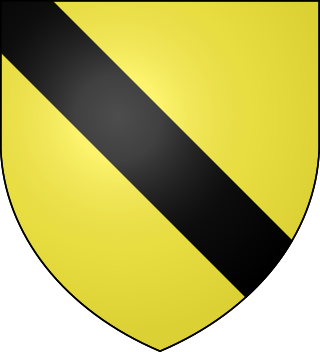
Peter de Mauley, 1st Baron Mauley, Lord of Mulgrave was an English noble. He served in the wars in Wales, Gascony and Scotland and was a signatory of the Baron's Letter to Pope Boniface VIII in 1301.











